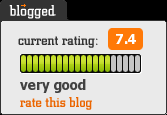The City University of New York has a series of Information Competence Tutorials that distill the investigative process of research.
It is commonly accepted that there are seven integrated steps you complete when you conduct research; for example, Cornell University Library's, "Research Strategy: 7 Steps"(based on Micheal Engle's study at Cornell).
C.U.N.Y.'s Turorials page has eight, which means the last step is C.U.N.Y.'s take on what usually gets left out. And that is, "Use, Evaluate, and Treat Critically Information Received From the Mass Media" (2009, "Information"). This is usually lumped in under evaluating information, but C.U.N.Y.'s take ensures that burgeoning researchers also scrutinize elements of the intravenous mass media that we are forced to endure, like the skewed cable news networks like MSNBC, FOX, and CNN.
In fact, the eight step makes a nice segue for one of Infomation Literacy's hallmarks which is life-long learning and an ageless skepticism. The eight step covers issues like Gatekeepers, or "a person or persons who control the flow of information" (2009, "Gatekeepers") which tells of the media's reluctance to report on Roosevelt's struggle with Polio because the country was in political and economic turmoil and needed the image of a physically strong figure head.
The subject "Target Audience" reminds students, "Remember, the MEDIA in the United States are comprised of individual business corporations and their aim is to make a profit. To do so, they must entice the public to buy, consume, or watch their products." (2009, "Target Audience"). The Target Audience tab also reminds students that to arrive at the target audience of a magazine, you must look at the advertisements.
The color of the tutorial is a calm, sedate blue; the links are clean and clearly deliberated upon. In other words, there is a keen attention to organization, continuity, and linear thought. And therein may lie the problem. The "lessons" progress as the user clicks the next button; this allows the user to learn at their own speed, but it also begs the question to whether this process could be sped up or turned into a video or mpeg. This media can also be stopped and started, but it moves faster and all students relate well to images; although, to be fair, the Tutorial page does have images that accompany all their explanations. The viewer is not left to fend for themselves in a soup of text.
Likewise, the font is silly or arcane or anything but legible and sophisticated. Maybe too sophisticated. You know, when I look at a page, I like to feel that the creator of that page went out of their way to ensure that I can read the font. I am sure many older people share the same sentiment. In other words, I don't think it ever hurts to do more with less; in the case of C.U.N.Y.'s Tutorial page, I would say that no harm would be done by making the font a little bigger. That's one of the things I love about Cornell's page. A 7 year old or a 70 year old could use that page, and it is obvious that the creator took this into account.
Spicaresque:
A Spanglish blog dedicated to the works, ruminations, and mongrel pyrotechnics of Yago S. Cura, an Argentine-American poet, translator, publisher & futbol cretin. Yago publishes Hinchas de Poesia, an online literary journal, & is the sole proprietor of Hinchas Press.
Subscribe to:
Post Comments (Atom)

.png)

No comments:
Post a Comment